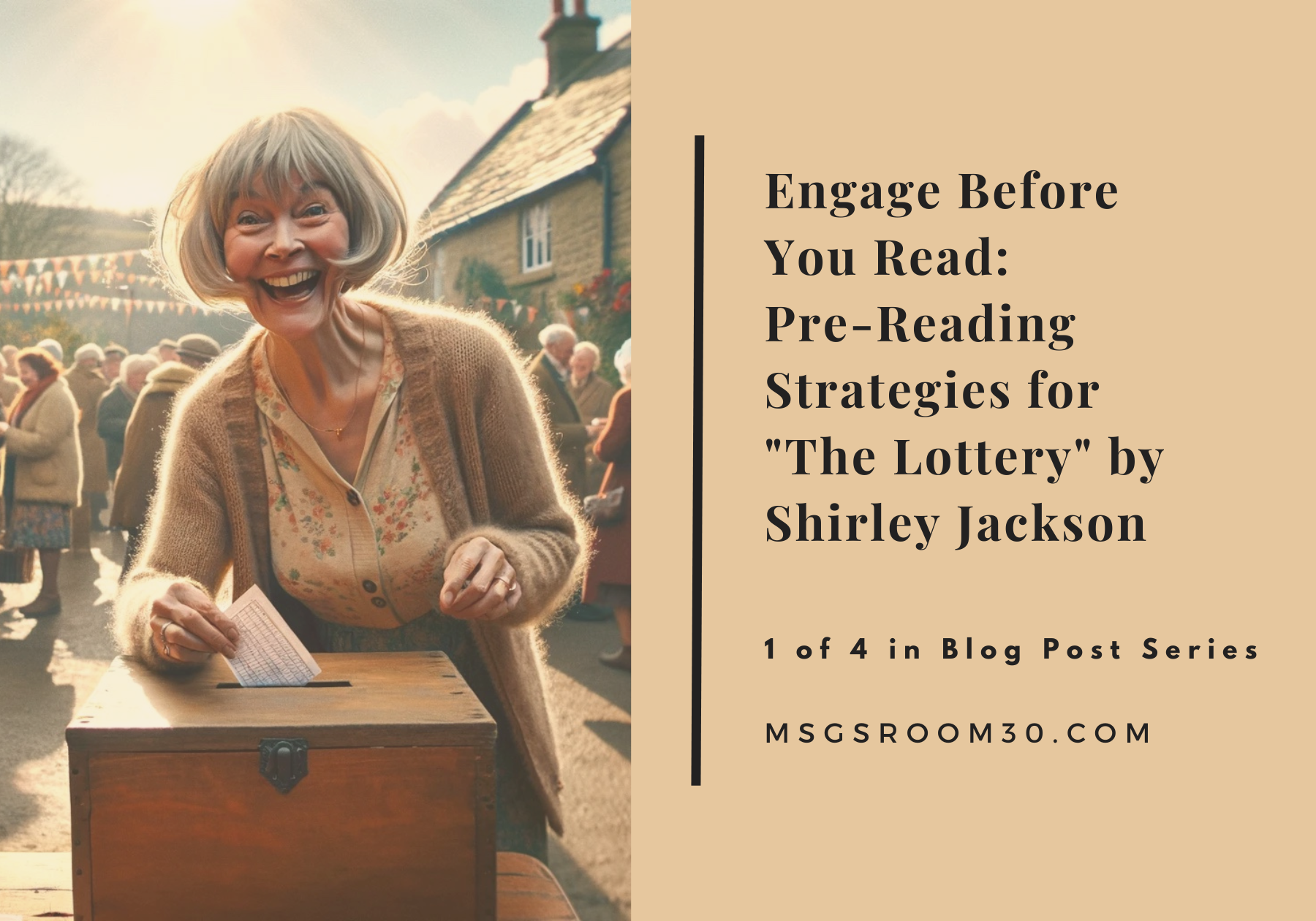Welcome, teachers, to the first part of a 4-part blog post series of our journey through Shirley Jackson’s provocative and ever-relevant short story, “The Lottery.” As we delve into this classic narrative, it’s crucial to scaffold our students’ understanding and engagement from the very start. Pre-reading strategies are not just about previewing content; they’re about sparking curiosity, building background knowledge, and preparing students for the thematic explorations ahead. Let’s dive into some dynamic activities that will set the stage for a rich and thought-provoking study of “The Lottery.”
Setting the Stage with Historical Context

Activity: Multimedia Time Capsule
Begin by transporting your students back to 1948, the year “The Lottery” was published. Create a digital time capsule filled with artifacts from the era—newspaper headlines, music, fashion, and key historical events. Present these in a slideshow, allowing students to immerse themselves in the period’s atmosphere. This contextual dive serves not only as a history lesson but also as a primer to discuss societal norms and the concept of tradition, both central to our story. After showing students artifacts from the 1940s era, have them brainstorm (maybe using a venn diagram) the differences in society between then and now!
Predictive Reading: First Impressions Matter

Activity: Quote Tea Party
Before revealing the plot, introduce your students to “The Lottery” through a selection of intriguing, context-free quotes from the text. Students will be given a quote “strip” and then participate in a mock “tea party” sharing the information that they have with others through academic conversations structures. After the tea party, students will craft personal and team predictions about their next reading adventure, fostering a community of collaboration and critical thinking. Check out this activity here: The Lottery: Pre-Reading Tea Party Activity
Vocabulary Warm-Up: Bingo with a Twist
Activity: Vocabulary Bingo
Arm your students with the linguistic tools they’ll need to navigate “The Lottery” by introducing key vocabulary before diving into the text. But let’s make it fun—create a bingo game with definitions tied to the story’s vocabulary. As you call out definitions or use words in sentences, students mark their cards, eager for the chance to shout “Bingo!” This playful approach not only reinforces new vocabulary but also primes students’ attention to these words in the story’s context. Get your copy of my vocabulary words for the Lottery! Check out Bingo Baker for an easy way to quickly create a bingo game for your classroom!
Bringing Predictions to Life: A Visual Prelude

Activity: Imagining “The Lottery”
Cap off your pre-reading phase by inviting students to visualize the setting or themes of “The Lottery” based on their predictions and the introductory activities. Using a tool like DALL-E, generate images inspired by their ideas, or better yet, have students create their own artwork. This visual engagement encourages students to connect personally with the story before they’ve even read the first line, setting the stage for a deeper emotional and intellectual investment.
By integrating these pre-reading strategies into your lesson plan, you’re not just preparing students to read “The Lottery”; you’re inviting them into a world that challenges their perceptions and prompts critical thinking. Stay tuned for my next post, where we’ll dive into reading strategies and annotation techniques to deepen students’ engagement with the text.
Oh! And if you happen to be teaching characterization through “The Lottery”, check out this helpful post:
Unlocking Character Secrets: Direct and Indirect Characterization Examples in “The Lottery”






Leave a Reply